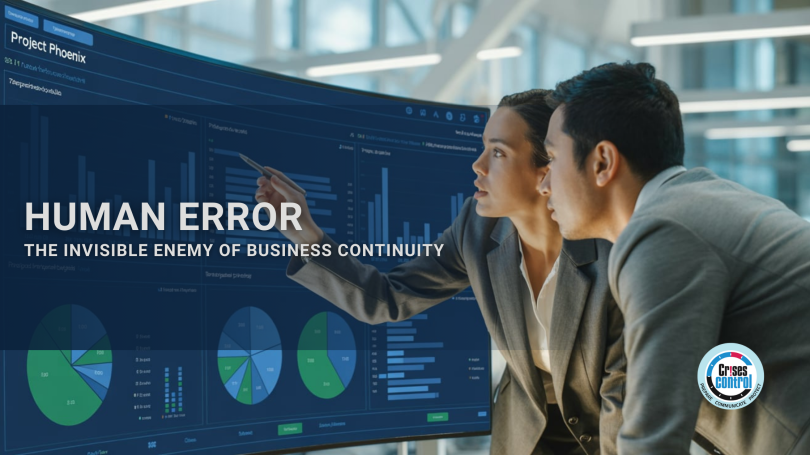Human error is a constant threat to business continuity. It can cause a wide range of disruptions, from data breaches and financial losses to safety incidents and reputational damage.
One example of the impact of human error on business continuity is the case of Public Health England (PHE) in October 2020.The BBC reported that PHE was using a Microsoft Excel spreadsheet to track Covid-19 cases in England. However, the spreadsheet was limited to 1,400 cases per file due to the use of an old file format. As a result, nearly 16,000 Covid-19 cases went unreported.
This example highlights the importance of addressing the risk of human error in business continuity planning. By understanding the causes of human error and implementing appropriate controls, organisations can reduce the likelihood and impact of disruptions caused by human error. In this blog, we will discuss the impact of human error on business continuity, and provide tips for mitigating the risk of human error in your organisation.
What is human error?
Human error is any deviation from what is expected, desired, or intended. It can be caused by a variety of factors, including fatigue, stress, distraction, and lack of training.
Human errors can be divided into two main categories:
- Slips: Slips are unintentional errors that occur when a person’s performance falls short of their intention. For example, a slip might occur if a person accidentally deletes a file or sends an email to the wrong person.
- Mistakes: Mistakes are intentional errors that occur when a person chooses the wrong course of action. For example, a mistake might occur if a person performs a task incorrectly or fails to follow a procedure.
How does human error impact business continuity?
Human error can impact business continuity in a number of ways. For example, human error can lead to:
- Data loss: Human error can lead to data loss by accidentally deleting files, overwriting data, or exposing data to unauthorised individuals.
- Financial losses: Human error can lead to financial losses by making errors in accounting, billing, or payments.
- Safety incidents: Human error can lead to safety incidents by making mistakes in operating machinery, equipment, or vehicles.
Tips for Mitigating the Risk of Human Error
There are a number of steps that organisations can take to mitigate the risk of human error, including:
- Provide training: Employees should be trained on the tasks they perform and the procedures they must follow. Training should also cover the risks of human error and how to prevent it.
- Use checklists: Checklists can help to reduce the risk of errors by ensuring that all necessary steps are taken and that nothing is overlooked.
- Design systems to be user-friendly: Systems should be designed to be easy to use and understand. This will help to reduce the risk of errors caused by confusion or misunderstanding.
- Implement error-proofing mechanisms: Error-proofing mechanisms can help to prevent errors from occurring in the first place. For example, drop-down menus can be used to prevent users from selecting invalid values.
- Monitor and learn from errors: Organisations should monitor for errors and learn from them. This will help to identify common errors and develop strategies to prevent them from happening again.
Unique points
In addition to the tips listed above, here are some unique points to consider for mitigating the risk of human error in your organisation:
- Create a culture of safety and learning: Employees should feel comfortable reporting errors without fear of punishment. This will help to identify errors early and take steps to prevent them from happening again.
- Empower employees to stop processes: Employees should be empowered to stop processes if they see something wrong. This will help to prevent errors from causing major disruptions.
- Use technology to your advantage: There are a number of technologies that can be used to reduce the risk of human error. For example, artificial intelligence (AI) can be used to detect and prevent errors in real time.
Conclusion
As organisations strive to bolster their business continuity strategies, mitigating human error is an essential step in the right direction. Through training, checklists, user-friendly system designs, and innovative error-proofing mechanisms, you can build a more resilient and reliable operation.
Are you eager to strengthen your business continuity strategies and mitigate the risk of human error in your organisation? Request a live demo of Crises Control today to discover how we can empower your business with effective tools and solutions. Your journey towards enhanced business resilience starts here.







